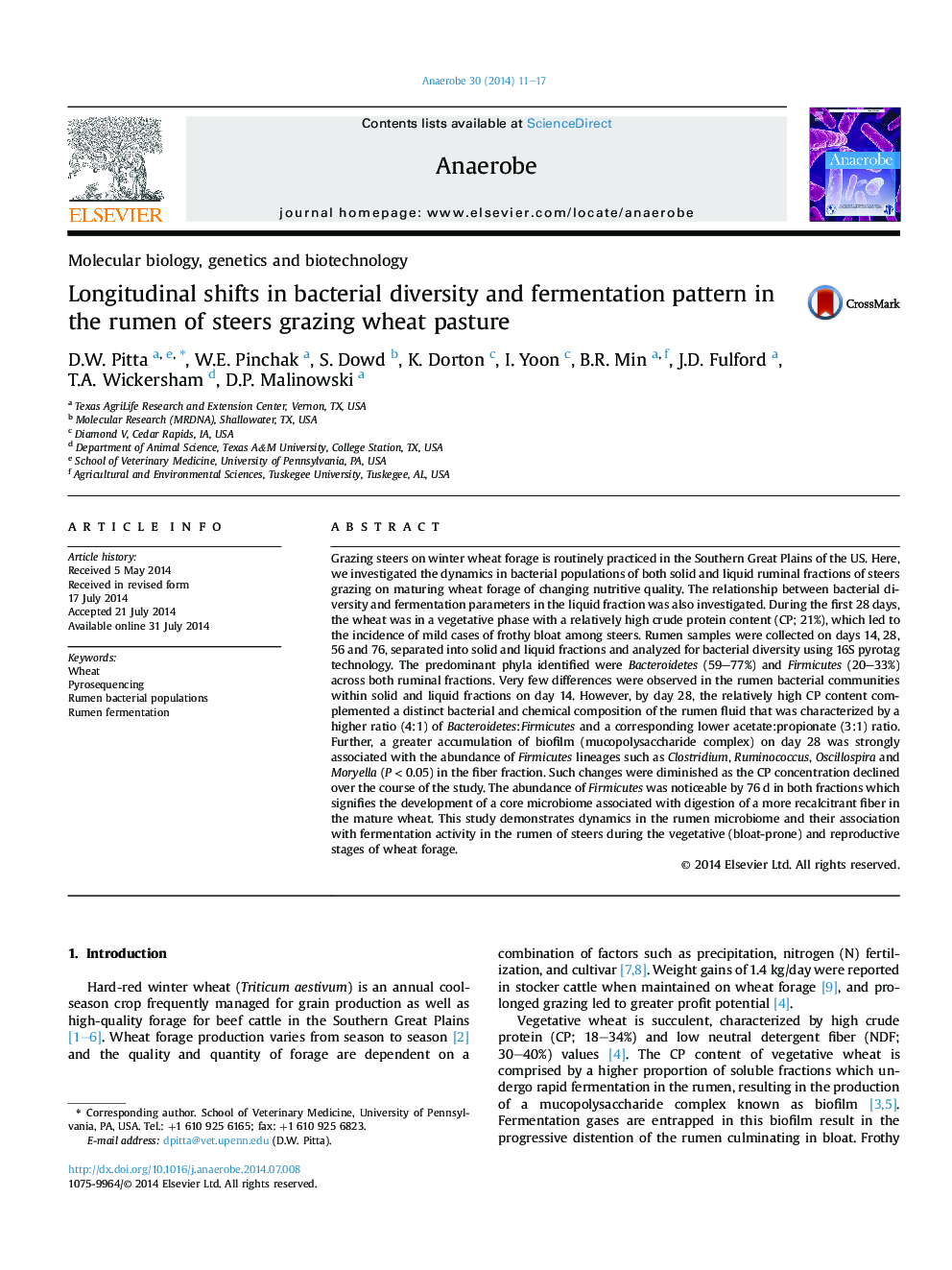| کد مقاله | کد نشریه | سال انتشار | مقاله انگلیسی | نسخه تمام متن |
|---|---|---|---|---|
| 3395030 | 1592833 | 2014 | 7 صفحه PDF | دانلود رایگان |
• Rumen bacterial diversity in steers associated with grazing wheat pasture.
• Rumen bacterial communities dominated by Bacteroidetes and Firmicutes.
• Relevance of Bacteroidetes:Firmicutes ratio to animal health and production.
• Connection between microbiome and fermentation pattern in the rumen illustrated.
Grazing steers on winter wheat forage is routinely practiced in the Southern Great Plains of the US. Here, we investigated the dynamics in bacterial populations of both solid and liquid ruminal fractions of steers grazing on maturing wheat forage of changing nutritive quality. The relationship between bacterial diversity and fermentation parameters in the liquid fraction was also investigated. During the first 28 days, the wheat was in a vegetative phase with a relatively high crude protein content (CP; 21%), which led to the incidence of mild cases of frothy bloat among steers. Rumen samples were collected on days 14, 28, 56 and 76, separated into solid and liquid fractions and analyzed for bacterial diversity using 16S pyrotag technology. The predominant phyla identified were Bacteroidetes (59–77%) and Firmicutes (20–33%) across both ruminal fractions. Very few differences were observed in the rumen bacterial communities within solid and liquid fractions on day 14. However, by day 28, the relatively high CP content complemented a distinct bacterial and chemical composition of the rumen fluid that was characterized by a higher ratio (4:1) of Bacteroidetes:Firmicutes and a corresponding lower acetate:propionate (3:1) ratio. Further, a greater accumulation of biofilm (mucopolysaccharide complex) on day 28 was strongly associated with the abundance of Firmicutes lineages such as Clostridium, Ruminococcus, Oscillospira and Moryella (P < 0.05) in the fiber fraction. Such changes were diminished as the CP concentration declined over the course of the study. The abundance of Firmicutes was noticeable by 76 d in both fractions which signifies the development of a core microbiome associated with digestion of a more recalcitrant fiber in the mature wheat. This study demonstrates dynamics in the rumen microbiome and their association with fermentation activity in the rumen of steers during the vegetative (bloat-prone) and reproductive stages of wheat forage.
Journal: Anaerobe - Volume 30, December 2014, Pages 11–17
